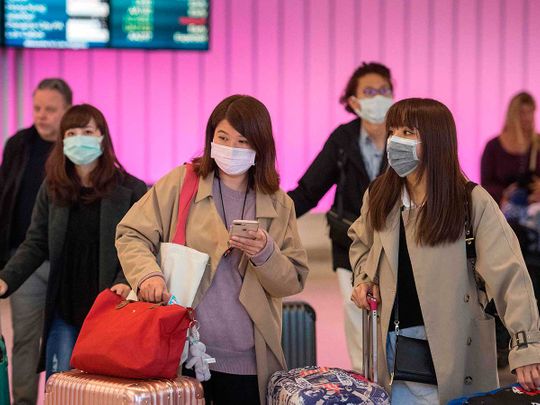
Coronavirus is officially a global pandemic. Multiple chains of transmission are underway in dozens of countries. Heroic efforts, such as instituting worldwide isolation measures like those in Wuhan, China, and in Italy might still slow the spread — but the impact of doing that everywhere could be even worse than the disease.
So the virus will traverse the world, probably infecting between 40 and 70 per cent of the global population during its first wave.
This might occur over a painful six to 12 months, or it might be spread over a more manageable several years. Either way, once the first wave is done, the virus is probably here to stay.
This seems scary, as if we are resolving ourselves to tens of thousands — or hundreds of thousands — of deaths in the United States each year. But it is very unlikely that things will remain that bad.
Established diseases behave very differently than novel pandemic viruses. Most important, when a disease becomes established, the age distribution of infection changes.
There are countless efforts underway to develop vaccines and treatments, but these take time; pharmaceutical solutions may not be available fast enough to blunt the first wave of the pandemic
High death rate
Right now, the high death rate from the coronavirus is driven almost exclusively by the oldest cases: One study from Wuhan found that 81 per cent of deaths as of Feb. 11 were in people over 60, and only one death out of 1,023 was in a person younger than 20. Because this is a new virus, everyone is susceptible regardless of their age.
We don’t know if infection with the novel coronavirus, confers long-lasting immunity. If it does, then something similar will happen: Eventually, almost all adults will be immune, and new infections will be concentrated among children. Since the virus causes severe disease almost exclusively in older adults, this shift to a childhood infection would nearly, but not completely, eliminate hospitalisation and deaths from the virus.
A build-up of population immunity will also moderate the yearly impact of the novel coronavirus in less obvious ways. Epidemics are like fires: When fuel is plentiful, they rage uncontrollably, and when it is scarce, they smoulder slowly.

Epidemiologists call this intensity the “force of infection,” and the fuel that drives it is the population’s susceptibility to the pathogen. As repeated waves of the epidemic reduce susceptibility (whether through complete or partial immunity), they also reduce the force of infection, lowering the risk of illness even among those with no immunity.
But a long and painful process may be in store first. The first pandemic wave might infect more than half the world’s population. It is not unreasonable to believe that 1 in 1,000 of those infected will die (since many infections will have mild or no symptoms, the death rate among identified cases will be far higher). Perhaps 10 times that number will be hospitalised.
Half of adults at risk
An infection rate of 50 per cent would leave half of adults at risk in the next wave. But a reduction in susceptible individuals would weaken subsequent waves. For the sake of argument, let’s suppose the second wave infects 30 per cent of the remaining susceptible population, which translates into infecting 15 per cent of all adults over 60.
Using the same assumptions as before, in the United States this would mean 51,000 deaths, about the same as a very bad flu season.
That figure would decrease with each subsequent wave, as both the number of people susceptible and the percentage of these infected go down. Eventually, we will reach a point where covid-19 deaths in the elderly are virtually unheard of — but this could take a decade or more.
Development of a vaccine would vastly accelerate this process. Even if we did not eliminate the disease, we could significantly cut its mortality rate in one to two years, rather than decades.
Even without a vaccine, improved treatment and new drugs could substantially reduce deaths. There are countless efforts underway to develop vaccines and treatments, but these take time; pharmaceutical solutions may not be available fast enough to blunt the first wave of the pandemic.
One of the greatest challenges in the covid-19 response is the massive uncertainty about how deadly the infection truly is. While a death rate of 1 in 1,000 is plausible, some estimate it could be 10 times as high. If this is correct, the path to the post-pandemic period becomes much harder, and efforts to develop treatments and vaccines even more important.
No matter how the severe the disease, it is still in our power to mitigate the impact of the first pandemic wave and hopefully stop it from overwhelming our health-care systems.
By staying home when we are sick, minimising mass gatherings and reducing physical contact, we can dampen the epidemic, reducing the number of cases and the speed at which they occur. We can do so knowing that there is an end in sight — though it may be years in the future — and this once-dreadful disease will morph into a mild annoyance in the years to come.
— Justin Lessler is an associate professor of epidemiology at the Johns Hopkins University Bloomberg School of Public Health.










